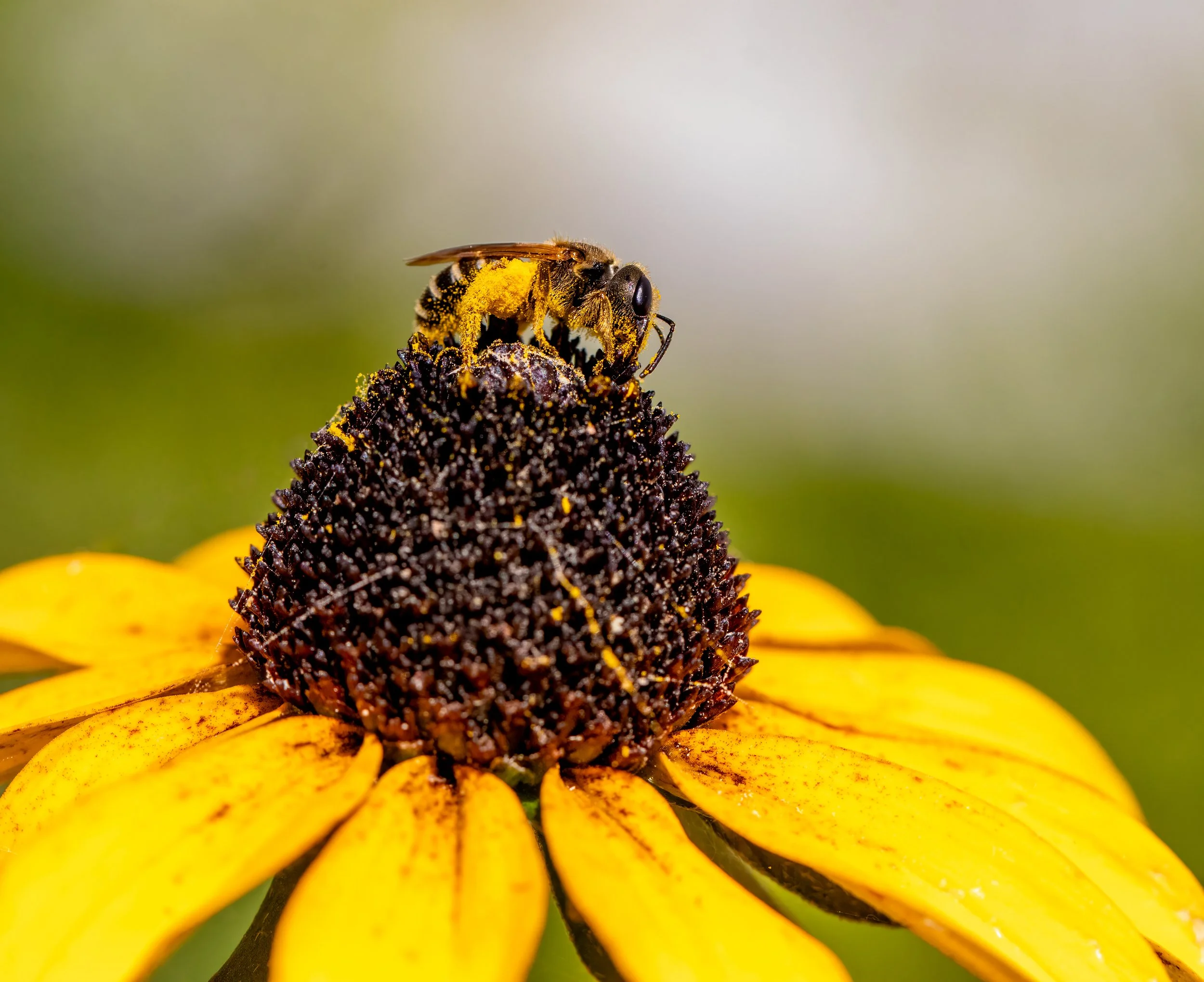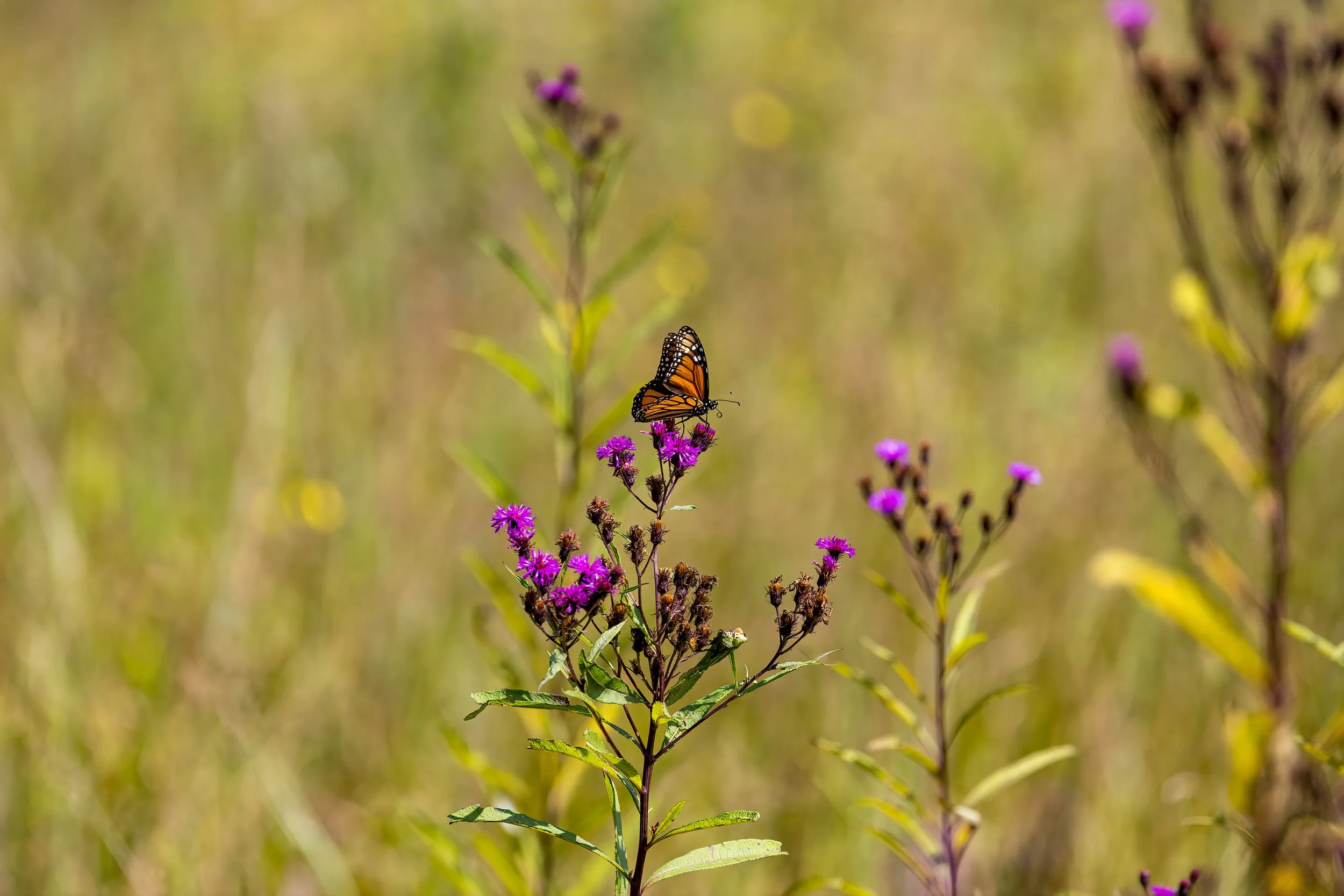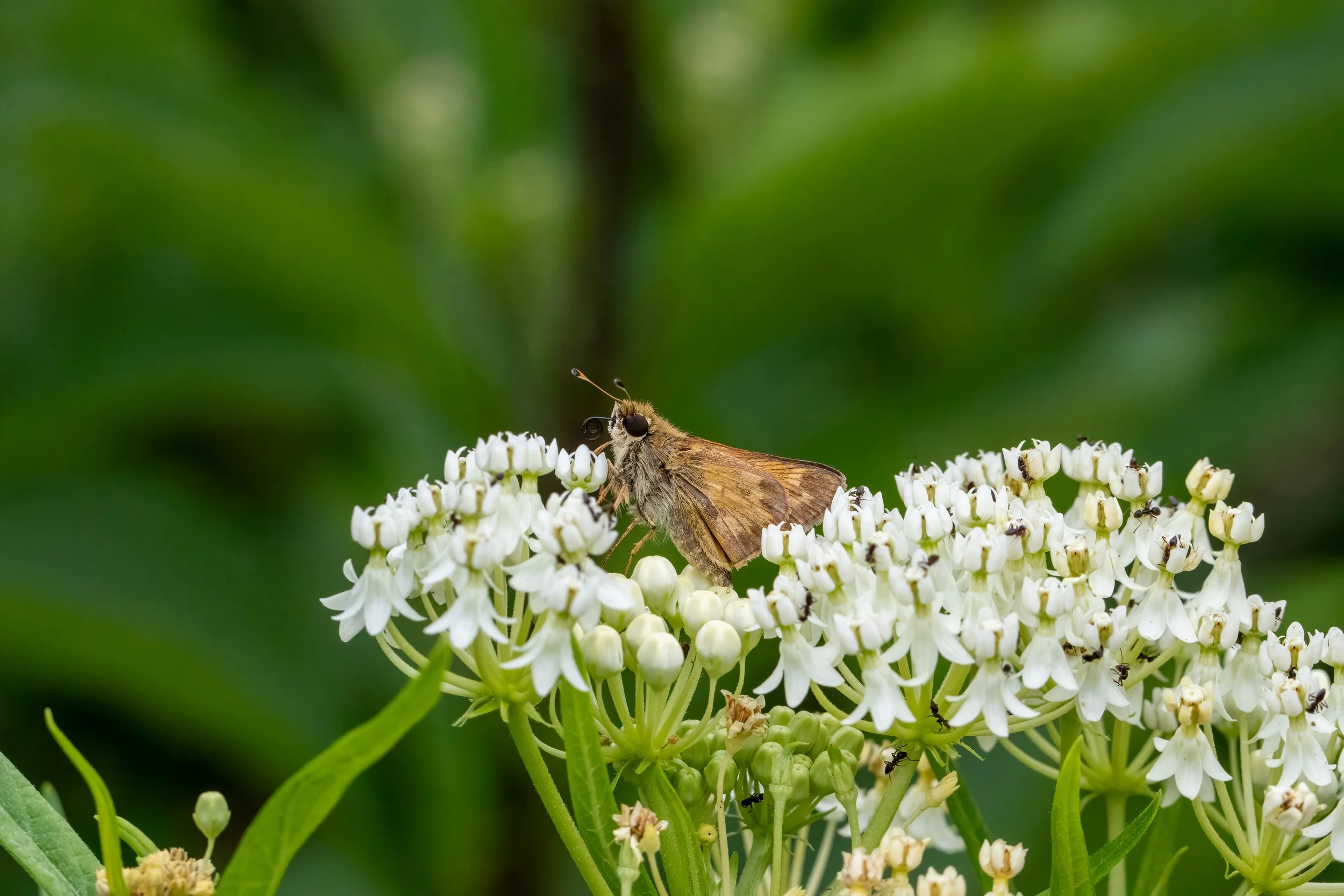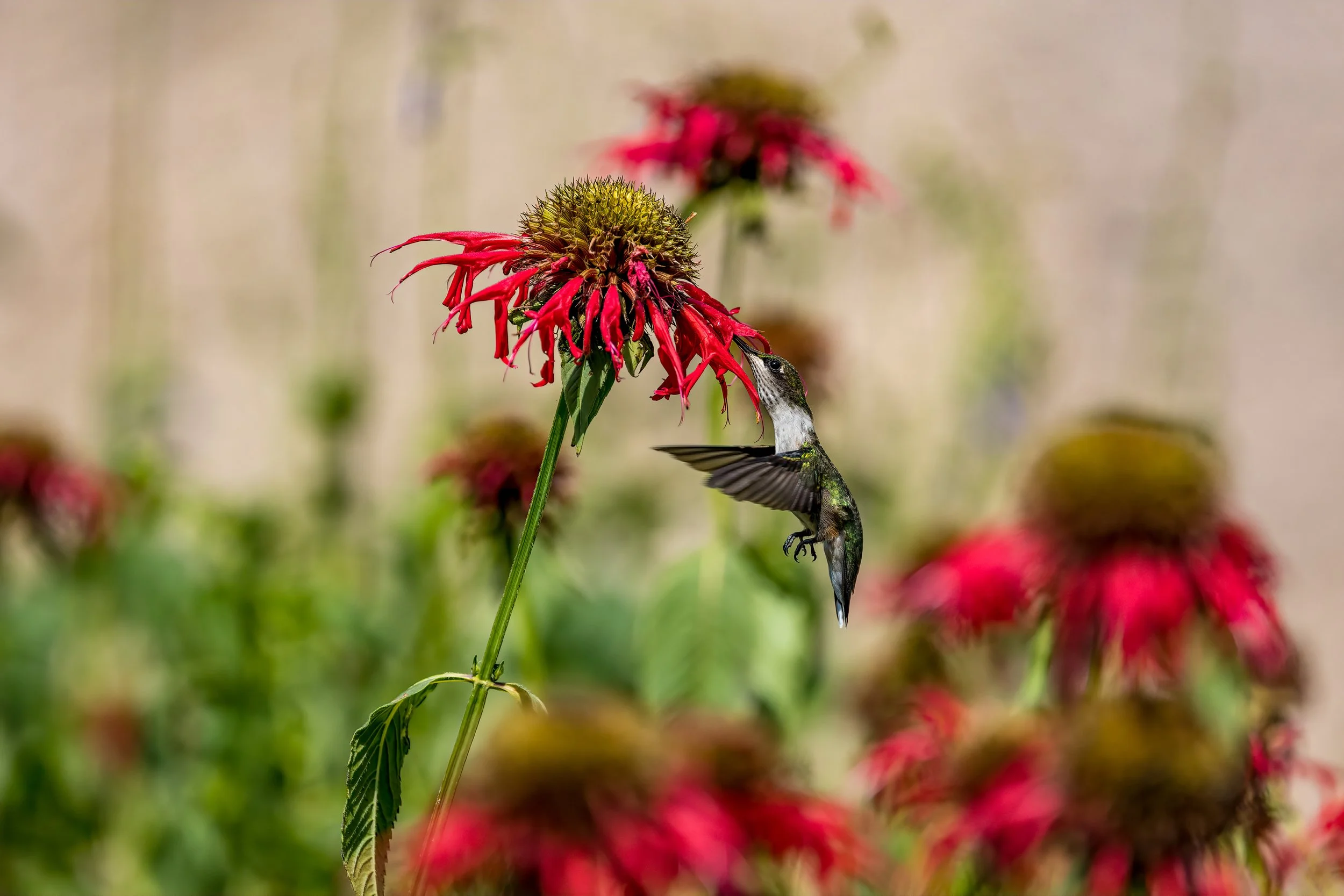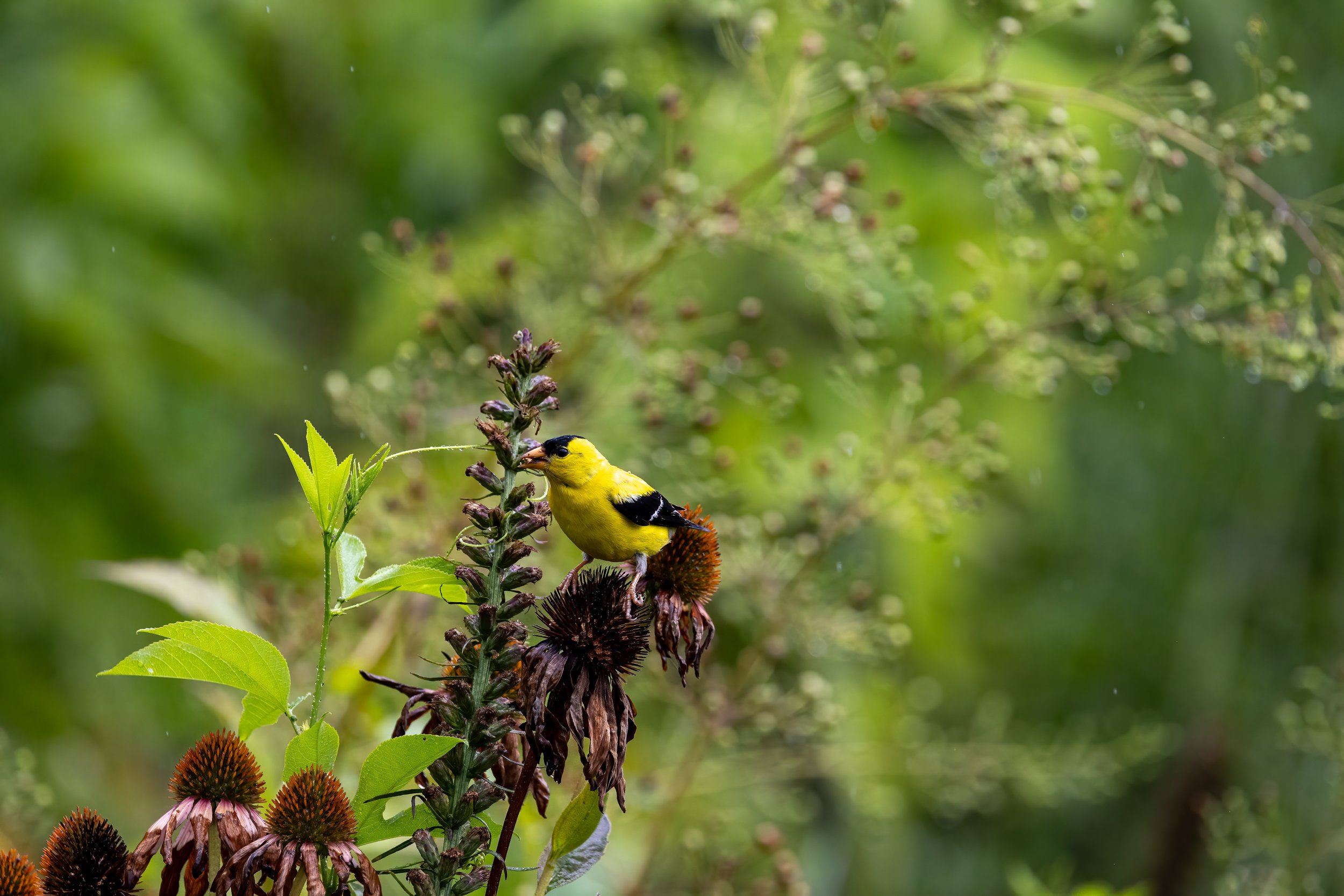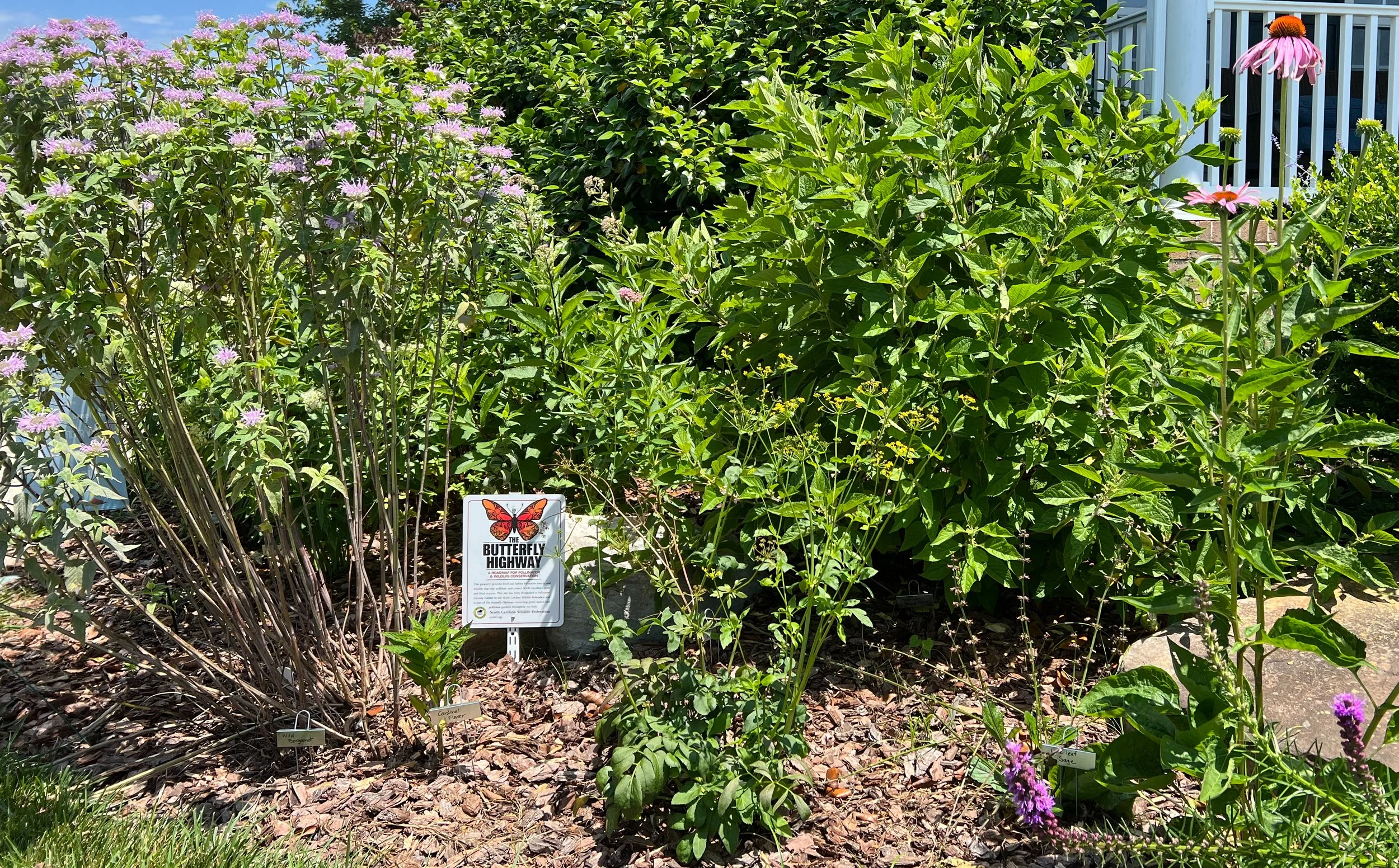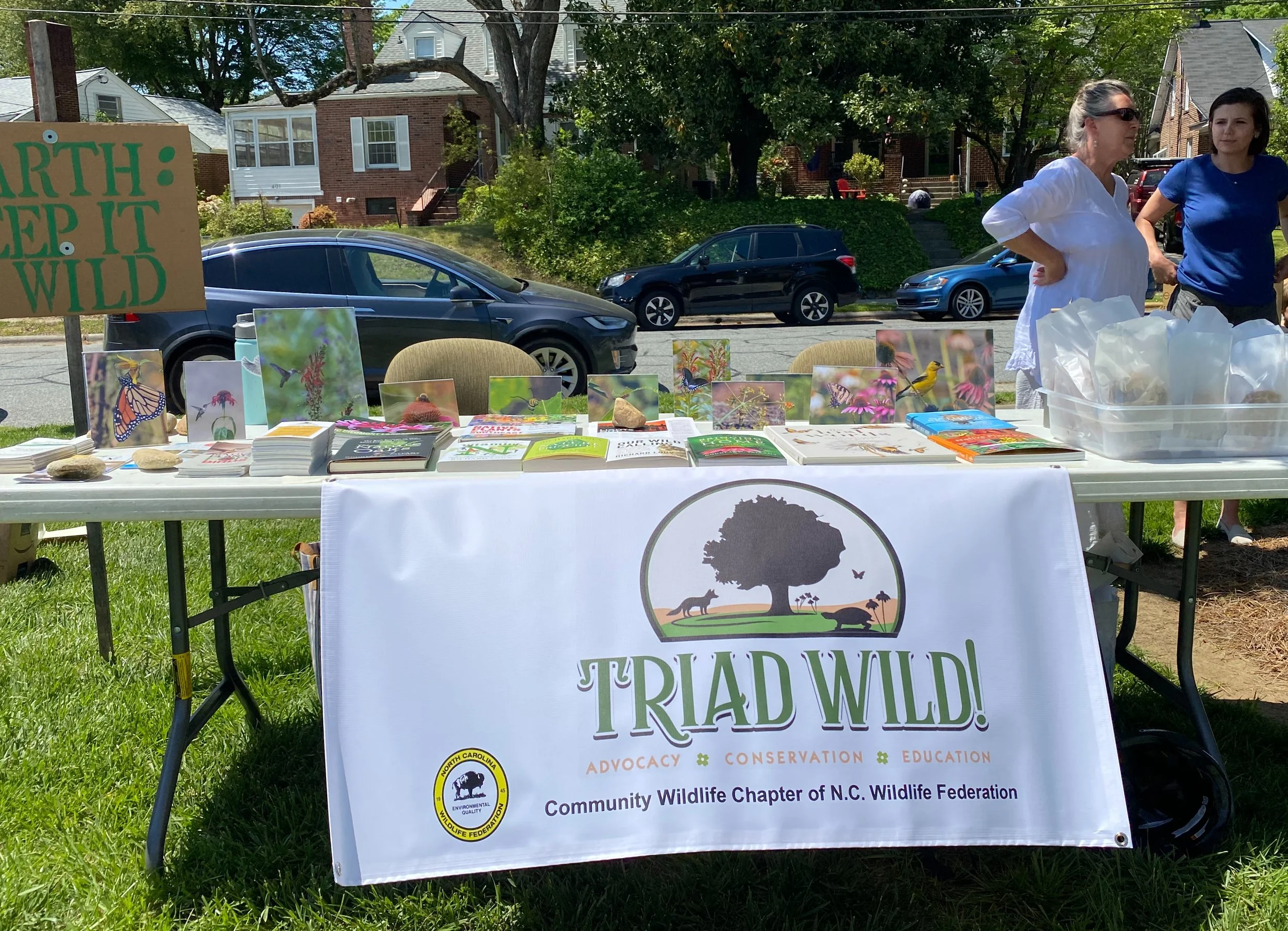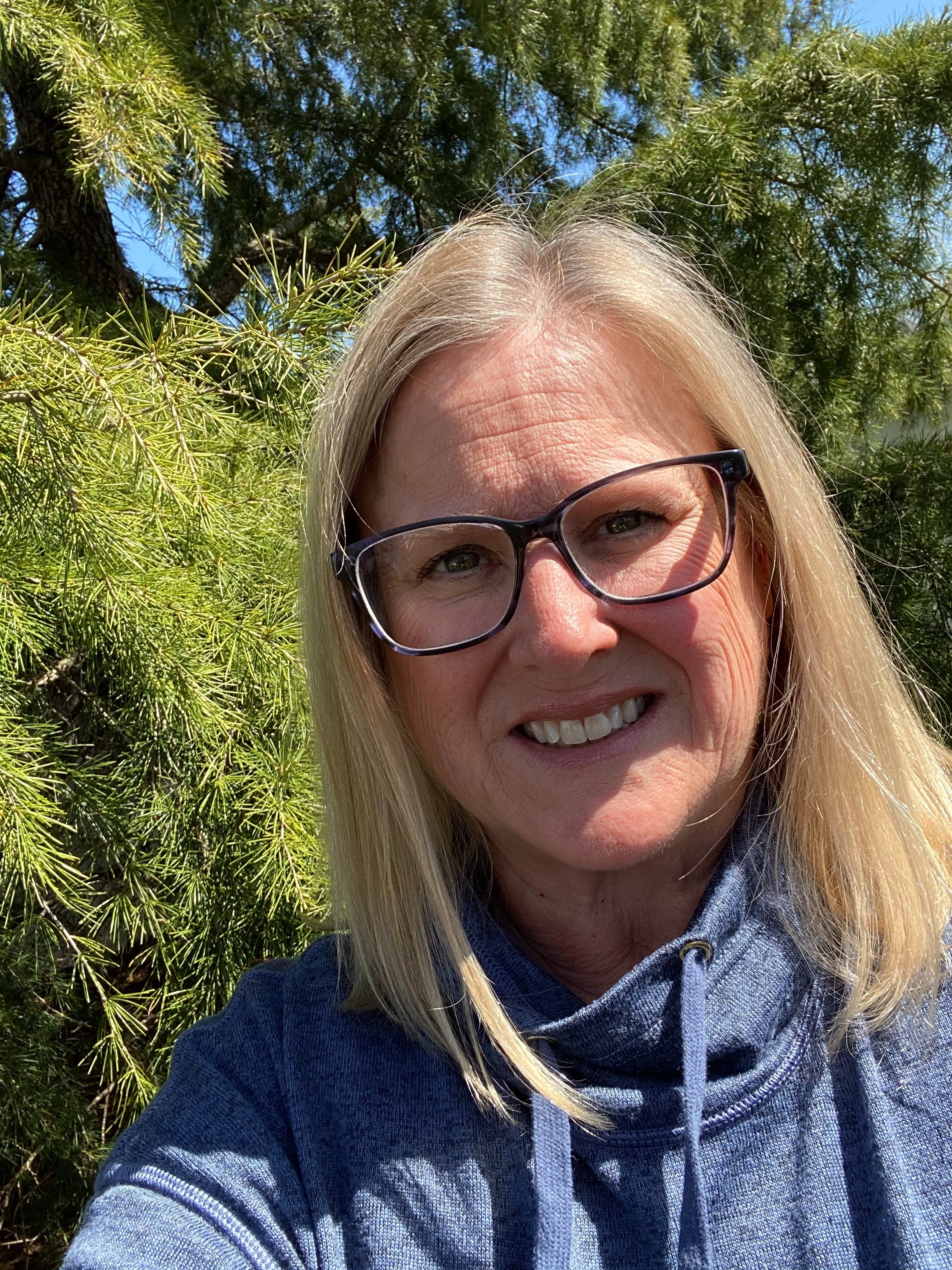Heather Russell
1. With 18 years of teaching in the classroom and now spending your time educating others through organizations like Audubon North Carolina and the North Carolina Wildlife Federation, what are some important facts you feel the public should learn about regarding pollinators?
Pollinators are not just bees and butterflies. Birds, beetles, bats, wasps, flies, and moths are also pollinators. They travel from flower to flower sipping nectar or feeding on pollen and then carry grains of pollen with them as they visit different flowering plants. More than 3/4 of all flowering plants, over 1200 food crops, depend on pollinators to transport pollen. During the last 3 to 4 decades pollinator populations have suffered serious losses due to diseases, pesticides, habitat loss, degradation and fragmentation, and climate change, as well as the loss of genetic diversity. Pollinators are considered ‘keystone’ species because they are necessary for all others to survive. Plants that most other wildlife rely on for food, would not be able to reproduce without pollinators.
2. Can you talk to us about the relationship between pollinators and habitats? What are the challenges pollinators face when roadways dissect their habitats?
Habitats should be diverse to host a wide variety of pollinators. Not all pollinators will visit all plant species. Some pollinators will interact with only one, or sometimes just a few plants - these are called specialists, while pollinators that interact with many different plants are called generalists. Specialist bees, like the blueberry bee, emerge from their nests just as their host plant starts to flower. They have a special relationship; the bees forage for pollen that can be found only on the one plant species and the host plant depends upon the one specific bee for pollination. Whereas generalist bees, like the leaf-cutter bee and green sweat bee, often visit a wide variety of blooming plants when looking for pollen.
Roadways are replacing native vegetation making it harder for pollinators to find the food and the nesting sites they need to survive. More and more meadows and prairies are becoming fragmented making it difficult for them to find suitable habitat. This is especially troubling for migratory pollinators like monarchs since smaller, weaker migratory pollinators die along the way because the distance between suitable habitats is too great.
Collisions with vehicles can be a source of mortality for all animals including pollinators. The height at which pollinators fly across roads is not well known and depends upon the species. Some species of bees cross at heights of less than 6 feet. Monarchs fly lower to the ground in windy weather which leaves them susceptible. Mud-puddling butterflies near roadways are also at great risk for being hit or run over by a vehicle. Vehicle strike isn’t the only danger roads cause. “Odor pollution” negatively impacts pollinator populations as well. Plant and soil contamination along roadways is high. Native plants growing along roadways have been found to be contaminated by metals found in gasoline, vehicle exhaust, and the chemicals used to treat and de-ice roads. Pollinators are exposed to the contaminates either by it being directly deposited on their bodies during contact with the plant or by wind, or by ingesting contaminated plants, pollen, or nectar. Exhaust has been found to inhibit the scent of flowers making it harder for pollinators to detect them.
3. How would increasing habitat connectivity benefit pollinators and habitats?
Fragmentation acts as barriers to movement. Pollinators that can’t find quality food within their flight range won’t survive. By increasing habitat connectivity, pollinators can move across the landscape easier increasing their interactions with different populations which then helps increase their genetic diversity. Pollinators in turn foster thriving plant communities that then lead to healthier soil and clean water.
4. You've led impactful projects with children in conservation. Can you tell us about your pollinator garden projects and the benefit that brings to children's education when including them in the creation of these gardens?
The garden project started out as a space that needed some TLC at a local elementary school. The school applied for and was granted a $500 mini grant through my local Audubon chapter for a new native plant garden. We funded the garden and then helped with the planting. Since then, I have made several visits to the first-grade classrooms to teach lessons on birds and butterflies and do some winter native plant sowing activities. We have planted milkweed for Monarchs that they planted around the school one year and another year they took the young plants home in the spring to plant in their yards. The students love hands-on learning and being involved. They are fascinated when the seeds begin to germinate and grow. They enjoy journaling the growth and recording data during the process. Lessons on butterfly life cycles come in handy when they find caterpillars on the milkweed plants at school, so the teachers have set up butterfly enclosures so the students can watch the entire process before releasing the newly enclosed, or emerged, butterflies in the school’s garden.
Pollinator gardens consisting of native plants that provide pollen and nectar for pollinators help local endangered species in the community while providing hands-on standards-based science opportunities. Outdoor education has become popular as teachers are looking to provide real, nature-centered learning experiences for their students, it’s like bringing the field trip to the school especially in areas where field trips are not in the budget. Research has shown that exposure to nature helps students build an appreciation for the environment, inspiring a sense of responsibility and stewardship in them which then helps them develop into environmentally conscious citizens.
5. How do these pollinator gardens benefit biodiversity in the areas they are built? What advice would you give others looking to build pollinator gardens of their own?
Habitat loss is a leading threat to maintaining biodiversity. Pollinator gardens perform many duties in addition to supporting pollinators! Some of the benefits they offer are:
They are natural filters and enhance stormwater runoff by trapping, absorbing, and filtering pollutants; and then they slowly allow clean water to soak back into the ground.
Besides helping to purify groundwater, they also help purify the air by capturing and storing carbon dioxide, thus improving air quality, and helping to reduce greenhouse gas levels.
They absorb heat, thus reducing the heat island effect.
They sustain biodiversity in urban settings by providing habitat for wildlife. These habitats provide shelter, food and water, and places for wildlife to raise their young.
Every native garden, no matter how big or small, will benefit pollinators! In an era where pollinators are facing many environmental challenges, just creating a small native plant pollinator garden is an impactful way to support pollinators. Your small garden can become part of a large network of pollinator friendly gardens across the country, helping to contribute to the survival of these important species. Gardens need to have a variety of native plants to provide optimal benefits to wildlife and the environment.
Why native plants? Because natives have evolved alongside native insects and other animals, they mutually benefit each other. Native plants not only provide nectar for pollinators, but they also provide shelter for birds and many mammals, and the nuts, seeds, and fruits produced by the plants provide food for some birds and other wildlife. Native plants are better adapted to local climates and soils which means they require less water once established and can withstand periods of drought. They don’t require fertilizers and pesticides that damage pollinator populations. Plant for long blooming periods, early spring through fall; this will provide food sources throughout most flight periods. Try to include blooming plants with different shapes and colors to attract a wide variety of pollinators. Provide a place for nesting and egg-laying such as bare ground for ground nesting bees and woody stemmed plants for stem nesting bees. Leave stalks standing throughout winter or cut them back to 8-24 inches, bees will hibernate in the stems during this time. Most native plants are perennials and will come back year after year.
While plants that provide pollen and nectar are important, don’t forget to add in native host plants for butterflies; a place for them to lay eggs and their caterpillars to grow. The caterpillars will hatch and then eat the leaves of their host plants so don’t be alarmed if you find holes in the leaves!
Bio
Heather Russell’s passion for wildlife and elementary education spans 20 years. Her journey into wildlife conservation and photography was inspired while caring for her mother and telling her all about the birds who would visit their backyard. As Heather dove into learning about birds, she also began researching the protected lands where they thrived. She expanded her bird photography by visiting these special places to photograph them in their habitats and bring back stories to tell others through her art. Today, through her love of photography and wildlife conservation, Heather combines her years of education and photography experience to educate others in the classroom, out in the field, and within her conservation groups. She enjoys classroom visits to local elementary schools to teach children along with helping to plant pollinator gardens at schools in her community. Her dedication to birds and all wildlife in North Carolina has led Heather to now serve on the board of her local NC Audubon chapter, T. Gilbert Pearson and North Carolina Wildlife Federation’s Triad Wild, a chapter she helped co-found.

